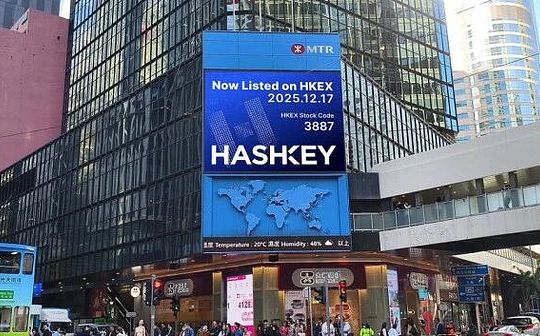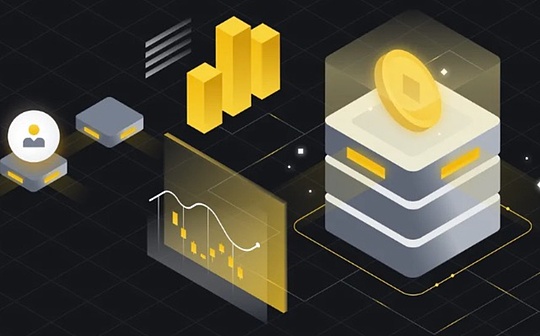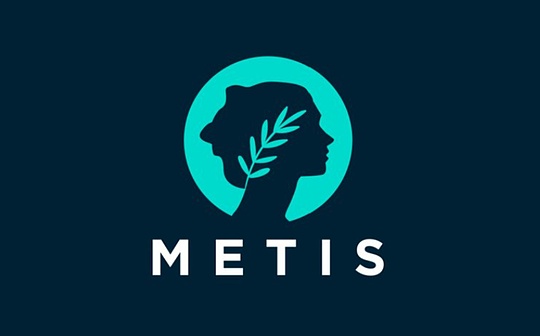
Author: YBB Capital Researcher AC-CORE
Foreword:
Layer2 should be an extension of “Ethereum correctness” in our consciousness, but due to market rumors of the founding team of Metis is the influence of “Vitalik Buterin’s mother/ girlfriend”. Metis was titled by Meme Layer2. ThisIt undoubtedly stabs the pest of market investors on Ethereum’s orthodox belief.However, the current essential attributes of the blockchain are still “code+finance”, and from the perspective of investment, technology and market have always been a pair of joyful enemies. Can Metis use other Rollup centralized sorters andThe disadvantage of strong control of economic models stands out from many Layer2?
Introduction to Metis
>
The origin of the Meme attribute, according to Metis’s official website information, Elena Sinelnikova, Lianchuang and CEO of Metis, has been promoting the education and popularization of the blockchain industry. It is also the union of the world’s largest female blockchain community in educational non -profit organizations in the world.Innovation.The other Lianchuang of Cryptochicks is Natalia Ameline. She is the mother of Vitalik Buterin, the founder of Ethereum. In addition, Dmitry Buterin, the father of Vitalik Buterin, also led the founding of blockchain education company Blockgeeks.course.Metis Network was established in 2018 and was released in May 2021.
Metis is a Layer2 based on the Ethereum chain, the earliest fork project of Optimism. The working principle is the same as other Layer2. The biggest highlight is its first Optimistic Rollup to successfully implement the sorter decentralization.The network adopts the PROOF-OF-Stake Sequency POOL mechanism to ensure the continuous availability and review resistance of the network. At the same time, the cost sharing and sorter pledge.These sorters are responsible for determining the packaging order of the transaction. During the process, at least 2/3 of the sorter signatures in the sorter pool must be obtained to upload the data to the Layer1 network.In order to prevent malicious behaviors, Metis also introduced the role of verificationrs to conduct sampling surveys on the block to ensure that the sorter of the sorter is correct.
MPC (multi -party calculation) has advantages in privacy protection and decentralization. However, there are also obvious disadvantages in the blockchain network that needs to reach a consensus.Due to the lack of relay node distribution information, the increase in the number of communication times has led to a significant increase in communication costs in the network.Metis’s solution is to transform a single -point sorter into a sorter pool. Through node pledge mechanism and rotation mechanism, decentralization is achieved, so that decentralized sorters can reach a consensus to complete the signature.Although this may eventually make network costs not much lower than Layer1, it can achieve anti -MEV and solve single -point failure problems, and at the same time distribute income to node pledges.
Recently, the sharp growth of Metis TVL has attracted attention to the importance of decentralized sorters. According to L2Beat data, the currently ranked fifth in TVL in all Layer2 networks.The original intention of Metis’s decentralized sorter design can actively allocate cakes, but also allows the market to see the value capture of Layer2 native currencies.
>
Rollup three elements
Rollup is one of Layer2 solutions, also known as rolling.Its working principle is to migrate and store the transaction computing and storage on the Ethereum main network (ie Layer1) to Layer2 for processing and compression, and then upload the compressed data to the Ethereum main network to expand the performance of Ethereum.
Rollup can be divided into ZK Rollup and Optimistic Rollup based on the solution that ensures the effectiveness of compression data (that is, the correctness of data).It involves the calculation of the chain, and the transaction is packed on the chain every few minutes, rolling verification and bookkeeping, and it is named.However, although we usually call it the Rollup chain, the lower part of the rollup chain is not a complete blockchain. It literally understands Rollup rolled up a bunch of transactions to form a rollup transaction. After all nodes receive this ROLLUP transactionDo not execute the logic of being rolled up and only accept these logic execution results.
>
-
Sequence (Sequence)
The sorter is the role of L2 responsible for sorting, organizing, packing, and submitting transactions to the L1 network. At present, most L2 projects rely on single -sequencer (usually the project party itself) to complete the above work. There are two security here.Question: 1. Single -point failure. If the serial device occurs due to attack or technical failure, the entire network will stop;
2. Extensible issues, a single serial device may be difficult to cope with increasingly increasing transactions.
-
verify
During the transaction process, the data sent by the sorter needs to be verified. At present, most of the verification of Rollup in Ethereum is performed by the Ethereum Rollup smart contract to ensure the credibility of the data.There are two different verification methods: zk rollup (zero -knowledge proof Rollup) and Optimistic Rollup.For example:
Zk rollup:
Verification method: ZK Rollup uses Zero-Knowledge Proofs to verify the correctness of all transactions that occur in Layer2.Zero knowledge proof allows the verification party to confirm its effectiveness without understanding the details of the transaction;
Privacy Protection: ZK Rollup emphasizes user privacy because it is submitted on Layer1 to the “proof” of the calculation results instead of the detailed information of the transaction.The specific transaction content is carried out on Layer2, and Layer1 only verifies the effectiveness of zero knowledge proof.
Optimistic Rollup:
Verification method: Optimistic Rollup adopts the “optimistic” strategy, that is, assuming that all transactions are legal, and then verify if necessary.Verification is completed by fraud proofs, that is, submitted a certificate on Layer1, which proves that the transaction on Layer2 violates the rules;
Real -time: Because all transactions are legal, the transactions on Layer2 can be proceeded quickly on Layer2, and verification is when there is controversy or objection.
-
DA (DATA Availability)
DA is the availability of data. The status data of each transaction processed under the chain is published, so that other participants can also access and use these transaction status data.Some layer2 write the status data of the transaction into Ethereum Layer1 to achieve DA.There are also some Rollup Layer2 who write key data on the third -party blockchain. The premise of data availability is that the data is credible.
For example:
DA: DA: Make sure to obtain data on Layer2 on Layer1 in Layer1.If the data is not available, anyone can raise objections on Layer1, which helps to prevent potential data tampering or omitted;
Commitment in ZK ROLLUP: In Layer2, the calculation and storage of all transactions occur, but only the calculation results (called Community) are submitted to Layer1.Zero knowledge proves to prove the correctness of these Commitments.
Note: In ZK Rollup, “Community” is more focused on verifying the correctness of the calculation results on the Layer2 transaction calculation, and “data availability” is more concerned to ensure that Layer1 can obtain data on all transactions on Layer2. The two are usually complementary to ensure that it is to ensure that it is necessaryThe security and reliability of the entire system.
Among the three key elements of Rollup, sorters are considered the most critical.The sorter is responsible for the process of sorting and compressing the Layer2 transaction information under the chain.Because this process involves the credibility verification of data, the availability of data is very important.However, when the sorter is decentralized, the implementation of data credibility verification and availability may no longer be so important.
Metis decentralized sorter based on POS consensus
>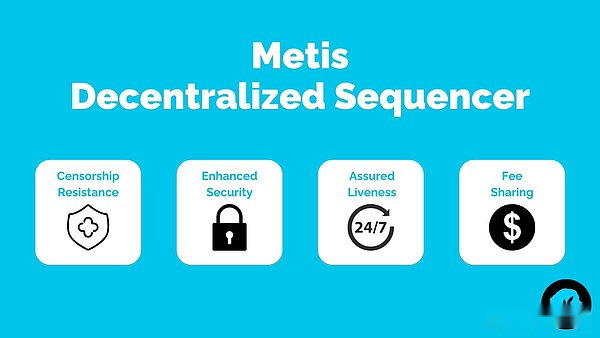
Source: Metis L2
-
Selection of sorters
At the Metis locking $ Metis, there is a chance to become a node. It will calculate the weight based on the number of $ metis of the locking position. The algorithm will allocate a range for these nodes.Metis Rollup has improved the “transaction data verification sector”.During the calculation process of Layer2 layer, a role called “Veritor” was introduced, and a competitive mining mechanism was introduced to inspire verification nodes to quickly verify transactions, and this process was realized through the competitive mechanism.Similar to other Layer1 networks using the PROOF-OF-Stake (POS) mechanism, Metis’s transactions also require nodes for verification.Therefore, there is no controversial problem for data packaged and transmitted from Metis and transmitted to L1. It also avoids the problem of extraction and latency from the Metis from Metis to the main network of Ethereum.
Compared with Optimistic Rollup, a significant difference between Metis Rollup is that the assets from Metis to get the Ethereum L1 layer only takes a few hours or minutes.This highlights the advantages of Metis Rollup in terms of processing transactions.In general, the higher the probability of the node with the lock -in amount, the higher the probability of adding a sorter.Of course, there are some random components.
-
The MPC of the Sortor (Multi -Party Calculation)
Metis implements the decentralization of sorters involving three key roles: administrators, sorters, and POS -based consensus layers.
administrator:Responsible for setting the key parameters of the overall network, as well as the qualifications to manage the sorter pool.The agreement party no longer has the absolute control of such affairs, but is executed by the administrator after approval by the proposal.One of the difficulties to achieve decentralization is that the management of the sorter must be carried out in a decentralized manner, while maintaining efficient and convenient;
Sortter:Metis uses MPC (Multi-PARTY Computation) signature based on TSS (Threshold Signature Scheme) to manage the signature permissions of multiple sorters.Each sorter has the right to determine a batch and sign the MPC signature to allow all sorters to participate.If the number of signatures exceeds 2/3, it is considered that the batch is valid and can be submitted to the Rollup contract on L1.The MPC signature performed by the sorter pool is managed by another contract based on the POS network.When the POS network does not detect the MPC address, the MPC module will be triggered to generate the key;
PoS -based consensus layer:POS network is responsible for managing contract signature permissions, monitoring the MPC address, and the generating key generation.The generated key will be distributed to each of the sorters in the pool after the slice is used for MPC signatures.The setting of this module covers the life cycle management of the key, including multiple signature generation, the key to the key, the application signature, delete signature, etc.;
The reason for using TSS is its attributes that have high tolerance and high flexibility.Compared with multiple signatures, TSS does not need to verify each signature on the chain. Instead, the signatures of all signatures are uniformly verified, thereby increasing the transaction confirmation rate.In addition, the communication between the POS node uses an independent Tendermint channel, and the communication of MPC during running uses the libp2p protocol.The design of this whole system is designed to achieve efficient and safe sorter decentralized management.
-
Metis sorter trading process
1. Start the user to start the transaction; 2. The transaction is forwarded to the network sorter node; 3. Block generation: When the sorter accepts the transaction is valid, create a block; 4. Finally determine:To the main chain of Ethereum.
-
Metisedf
Metis Ecological Development Fund provides financial support for this, covering multiple aspects, such as the development and deployment of incentive protocols, providing liquidity support, conducting security audit and implementing liquidity mining plans.The allocation includes:
Sequencer mining: 65.4%(3 million $ metis / & gt; 260 million US dollars);
Ecosystem funding: 34.6%(1.6 million $ metis / & gt; $ 140 million).
Centralized sorter problem
>
The principle of Ethereum is that each node is stored and performed each transaction submitted by the user. This high -level security method also causes the entire network to be very expensive. Therefore, the Rollup solution needs to be adopted for the expansion of the entire network.Simply put, Rollow = Layer1’s set of contract + layer2’s own network node, that is, smart contract + under -chain polymerization on the chain, rely on Ethereum in terms of settlement, consensus, and data usability.
-
The smart contract on the chain indicates that its trust model is a smart contract on Ethereum, and the security of Ethereum is borrowed;
-
The under -chain polymerizer indicates that it will execute and aggregate transactions under the chain, compress large -scale transactions, and eventually put the Ethereum main network to achieve a faster and cheaper purpose.
Layer2 network nodes are composed of many parts, of which sorter components are the most important.It is responsible for receiving trading requests on Layer2 to determine their execution order and batch the transaction sequence, and finally transmitted to the Rollup project on Layer1. At presentBut it takes the opportunity to occupy the decentralized sorter.
Layer2’s full node can be obtained through two ways to obtain a transaction sequence: one is to obtain directly from the sorter, and the other is to read the BATCH sent to Layer1, but the latter has a stronger non -modified attribute.Because the transaction execution will change the status of the blockchain ledger. To ensure consistency, in addition to the transaction order of Layer2, the full node of Layer2 must also synchronize the ledger status with the sorter.Therefore, the task of the sorter is not only to send the transaction batch to the Rollup contract of Layer1, but also the state update result of the transaction execution results of the state of the stateAdd to blocks in the blockchain, responsible for handling transactions in batches and publishing them to Layer1 smart contracts.
For the full node of Layer2, as long as the trading sequence of rollup on Layer1 and the original Static of the Layer1 can restore Layer2’s blockchain account book and calculate the latest Staticoot.Conversely, the Staticoot that Layer2’s full node itself is inconsistent with the STATEROOT published by the sorter to Layer1, which means that the sorter is fraudulent.In summary, compared to Layer2’s own network, Layer1 will be more decentralized, trusted, and safer.
Optimistic Rollup, as an example, allows Layer2 to provide fraudulent proof, which proves that the data released by the sorter in Layer1 is wrong.But for Optimism that has no fraud, if it really wants to stole Layer2’s user assets through a sorter, just let the sorter operator forge the trading instruction and transfer the assets of other people on Layer2 to their address.Finally, the stolen currency was transferred to Layer1 through the Bridge contract that comes with Rollup.
I think of Metis
>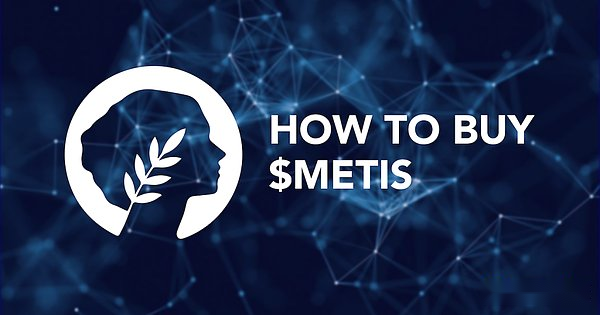
Source: Chaindebrief
Layer2’s biggest hype hotspot recently is undoubtedly an upgrade of Cancun, but this will not produce unique benefits for Metis.Aside from the market emotional impact of “Vitalik Buterin Mother/ Girlfriend”, the biggest competition point of Metis and other Layer2 lies in its decentralized sorter and economic models decentralized.Feedback of confidence.
Metis has different ways to hold fiscal power by other Layer2, but to divide more income to users.OP Rollup’s economic model as a whole is a strong control state. Through centralized methods, OP token rewards are constantly distributed to stimulate development and interaction.Under the income and interests, the pledges participated in the competition and greatly released the financial attributes of Layer2 infrastructure to attract a lot of attention in the market.
Meme more represents a culture and some sociological factors. For example, in the process of buying Meme, in addition to 10, hundreds of times, or even thousands of times of investment expectations, more parts come from our narrative methods and variousThe recognition and love of the factors, but it is always justice, and the growing TVL of Metis is also a feedback on the market’s expected investment expectations.The MEME attribute problem considers the technical level from the perspective of the market at the market. My point is that if the inscription is a tester of public chain performance, then MEME is a tester for market recognition to a certain extent.




